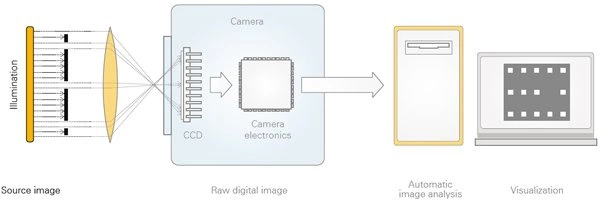The Basic Structure of Machine Vision Applications - Part 1
Published on April 15, 2008 by TIS Marketing.
Please Note: This blog post is part of a series of four posts altogether. The posts include: Intro, Part 1, Part 2 and Part 3.
Illumination

There is no image without light. An image is created due to the interaction between an object and photons. In contrast to this banality, in practice illumination is a complex technology. This is not only true for industrial, medical and scientific applications, but also for aesthetically oriented applications. Professional photo studios are not dominated by cameras but by the various types of illumination. The quick growth of the machine vision market permits some component manufacturers to concentrate fully on illumination. These manufacturers offer LED illumination in various versions. These component's range of variation, in addition to their high price reflect the complexity of this subject.
Optics
Cameras used in the domains of industry, medicine and science are usually shipped without a lens. Therefore, the user is able to adapt the optics to his or her special requirements. Besides normal lenses microscopes, endoscopes and telescopes are also used. Due to their standardized mount, in machine vision, the so-called C mount lenses are widely used. The calculation of these lenses only requires three parameters, an addition, a multiplication and a division. Nevertheless, the parameter's determination often leads to misunderstandings. We will show in one of the next articles how to avoid them.
To be continued...
